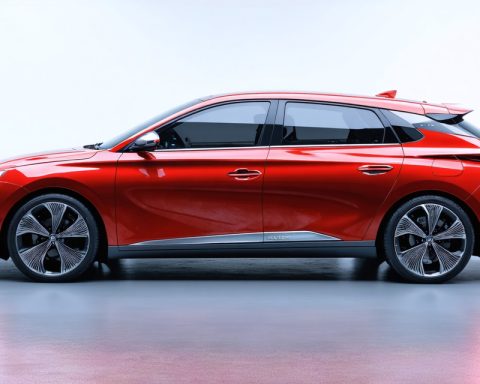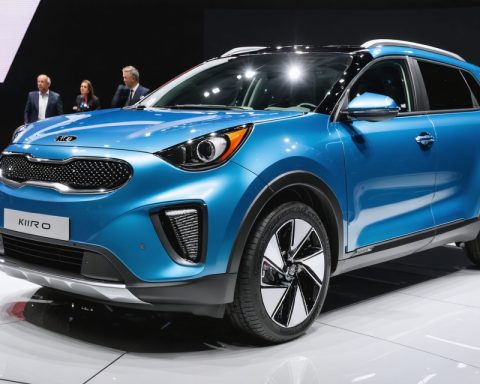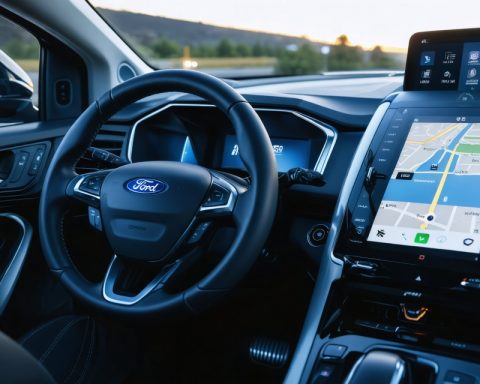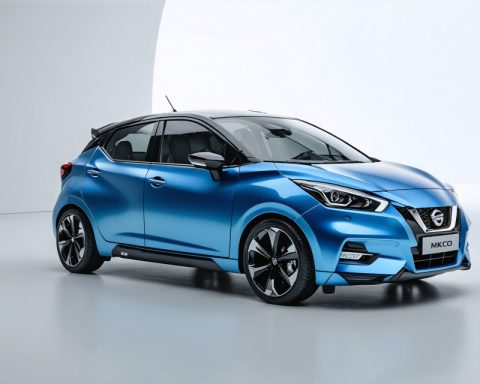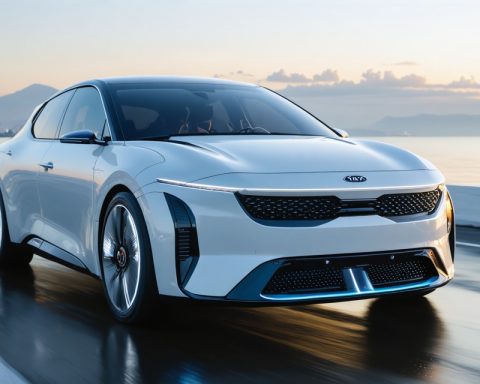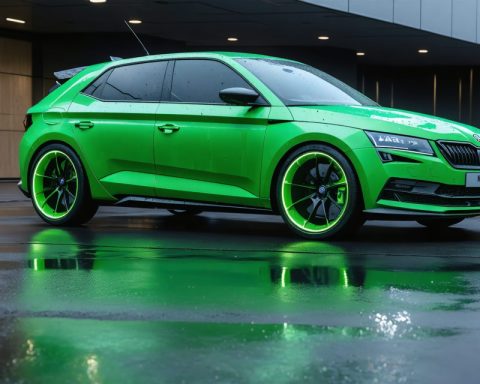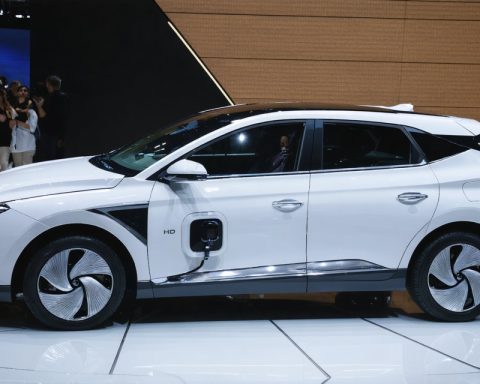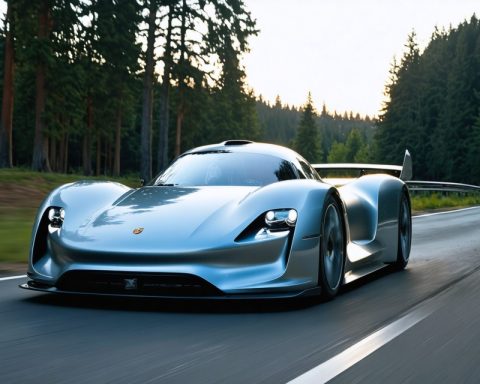- Americans are increasingly adopting electric vehicles (EVs), reflecting a shift in consumer priorities towards environmental consciousness, innovation, and driving pleasure.
- A Tata Consultancy Services study reveals that over 72 percent of American respondents plan to choose an EV for their next car.
- Younger drivers, especially those aged 18 to 25, are leading the charge, with 42 percent “very likely” to opt for an electric car.
- Generational differences are evident, as older drivers aged 46 to 55 show less inclination toward EVs.
- Manufacturers are responding to the demand with a growing variety of electric models, satisfying over half of consumers with current options.
- Choosing an EV reflects a broader commitment to sustainability and innovation, aligning with the cultural shift towards a cleaner and more efficient future.
A seismic shift is jolting the automotive landscape as Americans increasingly embrace electric vehicles (EVs) as their future rides. Once hesitant to abandon gas-guzzlers, a growing number of US drivers now find themselves captivated by the allure of battery power. This fascination is not just a passing trend but a remarkable pivot in consumer priorities anchored in environmental consciousness, innovation, and sheer driving pleasure.
Amid the hum of engines and the clamor of busy motorways, there’s a quieter revolution underway. This revolution is discernible in driveways and on showroom floors: Americans are seriously eyeing electric vehicles as their next car purchase. A recent study by Tata Consultancy Services highlights this sweeping preference, revealing that over 72 percent of American respondents plan to choose an EV next.
The trend is particularly strong among younger drivers. Individuals aged 18 to 25 lead the charge, with a stunning 42 percent describing themselves as “very likely” to opt for an electric car. These younger consumers are drawn not just by environmental messaging but by the sleek designs and cutting-edge technology associated with electric vehicles. Meanwhile, even those in the 26 to 35 bracket show robust interest, with nearly 80 percent leaning towards electrics for their next purchase.
In contrast, their older counterparts remain more cautious. Americans aged 46 to 55 are less inclined towards EVs, with the numbers showing only modest interest. This generational gap underscores a broader cultural shift—newer generations, shaped by climate change discourse, find EVs aligning seamlessly with their values and lifestyles.
Manufacturers, sensing the seismic shift, are racing to cater to this burgeoning demand. An expanding array of electric models is flooding the market, from nimble city cars to powerful muscle machines. Consumer satisfaction with the variety and performance of these cars is on the rise, with more than half expressing contentment with today’s options.
For American drivers, the consideration of an electric vehicle signifies more than just a choice in automotive technology. It’s a declaration of faith in a future where sustainable choices are paramount and a testament to the enduring human spirit to innovate for a better tomorrow. As this tide of transformation gains momentum, it’s clear that electric vehicles are not just the vision of tomorrow—they are rapidly becoming the reality of today. The roads are changing, and with them, the drivers’ aspirations for a cleaner, more efficient journey toward tomorrow.
Why Electric Vehicles Are Revolutionizing Your Daily Commute
The landscape of the automobile industry is undergoing a seismic evolution as electric vehicles (EVs) capture the hearts and minds of American consumers. While the push towards electric mobility has been building for some time, several pivotal factors are accelerating this transition, making EVs not just a trendy choice but a preferred one. Let’s explore additional insights about this significant shift, including industry trends, actionable tips, and FAQs.
Industry Trends and Market Forecasts
1. Market Growth: The global EV market is projected to grow exponentially. According to a report by BloombergNEF, EVs are expected to make up 58% of global passenger car sales by 2040. The U.S. market is a critical component of this growth, driven by consumer interest and legislative support.
2. Incentives and Policies: Federal and state incentives, such as tax credits and rebates, continue to be significant drivers for EV adoption in the U.S. The Biden administration has also shown strong support for electrification, further encouraging manufacturers and consumers.
3. Infrastructure Development: The expansion of charging infrastructure is crucial. The U.S. is witnessing robust growth in the number of public charging stations, thanks to initiatives like the National Electric Vehicle Infrastructure (NEVI) program, which aims to establish a comprehensive charging network across the country.
4. Cost Parity: The cost of EV batteries has been decreasing, leading towards price parity with traditional internal combustion engine vehicles. Experts predict that by the mid-2020s, EVs could cost the same or less than their gasoline counterparts.
Real-World Use Cases and Benefits
– Environmental Impact: EVs contribute significantly to reducing greenhouse gas emissions. According to the Union of Concerned Scientists, switching from a gasoline to an electric vehicle halves the carbon footprint over the vehicle’s lifecycle.
– Performance and Maintenance: EVs offer instant torque, which translates to smooth acceleration. They also have fewer moving parts, reducing maintenance costs and enhancing reliability.
– Energy Independence: EVs can significantly reduce dependence on fossil fuels, enhancing energy security and flexibility in energy sourcing, such as solar and wind power.
Reviews and Comparisons
– Model Variety: Consumers have diverse options now, from the affordable Tesla Model 3 to the luxury Porsche Taycan. Brands like Ford with its Mustang Mach-E and the Chevrolet Bolt are redefining market segments.
– Range and Charging: The latest EVs boast ranges exceeding 300 miles per charge, addressing ‘range anxiety.’ Fast charging technology has also advanced, allowing EVs to gain significant range in under 30 minutes.
How-To Steps & Life Hacks for Potential EV Owners
– Evaluate Your Driving Needs: Consider your daily commuting range and the availability of charging at home or work to determine which EV model best fits your lifestyle.
– Leverage Incentives: Keep updated with current state and federal EV incentives to maximize your savings when purchasing an EV.
– Plan for Charging: Install a Level 2 charger at home for convenience, and understand public charging networks available in your area.
Common Questions and Answers
– Can EVs handle severe weather climates?
Modern EVs are equipped with battery management systems that adapt to varying climate conditions. However, range can be affected in extreme cold. Preconditioning the vehicle while it is still plugged in can help mitigate this issue.
– What about battery lifespan?
EV batteries are designed to last for the vehicle’s lifetime, often warrantied for 8-10 years or up to 100,000 miles. Advances in technology continue to improve the longevity and efficiency of these batteries.
Actionable Recommendations
– Test Drive Multiple Models: Experience firsthand the differences in ride quality, technology, and range to find the best fit.
– Investigate Charging Options: Ensure that you have access to convenient charging, either at home or through public networks.
– Stay Informed: Follow ongoing legislative changes and technological advancements to leverage opportunities as they arise.
For further reading on electric vehicles and industry updates, visit Tesla and Ford.
As the road to an electrified future unfolds, embracing electric vehicles today signifies a powerful step towards sustainability and innovation, reflecting a commitment to cleaner and more efficient transportation.

